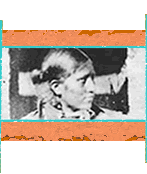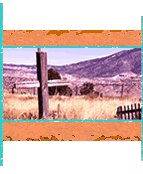





 |
 |
 |
 |
 |
 |
 |
||
|
Lecture Notes. 1997 Malcolm Ebright I. Types of Land Grants 1. Private Grants. Entire grant is owned by one or a few individuals as their private property. After meeting the conditions of the grant, the grantees could sell the entire grant (note that regarding sales of smaller parcels to be occupied by the purchaser, the custom of right of first refusal was often followed ). 2. Community Grants. Large tracts of land granted to a substantial number of people (usually from ten to one hundred. Both Mora grant and early version of Tierra Amarilla grant had seventy-six initial settlers ). 3. Hybrid or Quasi-Community Grants. Large tracts granted to one or few individuals with the requirement that the land be settled. Grantee induces a large group of settlers to move onto the grant and gives them each a small private lot for house and garden and grants them rights to use the remaining land for grazing, gathering fire wood, building materials, herbs, wild game, etc., but this arrangement not in writing. II. Steps in the Land Grant Process 1. Petition. Either by and individual or a small group ( for a private grant) or by a larger group (usually at least ten) for a community grant. No particular form was followed, but the need for land ( to feed their families/graze their livestock ) was usually mentioned as was a general description of the land requested ( TA: a track on the banks of the Chama River known as Tierra Amarilla ). Sometimes more specific boundaries were given as with the TA grant in later documents N. Navajo River. S. Nitrias River, E ridge of mountain range, W. a line from the Puerto of the Laguna de los Caballos. 2. Report by Government Official. ( usually either the alcalde or the governor ) Report from local officials as to the nature of the land requested ( whether able to support a community, for example, TA grant said could support five-hundred families ) and the qualifications of the petitioners (they were supposed to be landless ). 3. Grant by Governor. Essential element in a valid grant. When claims were submitted to US Courts in second half of the nineteenth century it was necessary to prove that this document had been issued even if the proof was sometimes indirect, as when original document had been lost. 4. Act of Possession. Alcalde would go to the land with the petitioners and perform ceremony of delivery of possession ( plucking weeds, casting stones and shouting " Long live the king- or Mexican government ." III. Hispanic Land Measurement 1. Documents vs. Physical Facts. While documents were important in establishing land grants, it was the physical facts of the use of the land that cemented the combination of documents and land use into a firm title. 2. Measurement by Varas. The first step in land use was the measurement of private tracts by varas. A vara was an imprecise measurement ( as were other Hispanic land measurements ) because all were tied to concrete situations of everyday life. A vara was a pace of a grown man, a league was the distance traveled on horseback over level ground at a normal gait for one hour, a fanega was like a bushel basket, and an almud was 1/12 of a fanega. 3. Standardized Measurements. Mexican law standardized these measurements so that a league was 5,000 varas, and a sitio was a square with each side being a league; the pueblo league was four square leagues. 4. Vara in Practice. These linear measurements all depended for their accuracy on a standardized vara. Even though Mexican law set the vara at three feet, in practice, the vara was based on a vara stick in the possession of the alcalde, or local official of each jurisdiction. Since these were not uniform, the vara varied from jurisdiction to jurisdiction in New Mexico. 5. Territorial Varas. In the Territorial Period New Mexico the vara was determined to be 33 inches based on a compromise. When Surveyor General William Pelham was faced with surveying land grants involving measurements in varas he was required to research surveying practice in New Mexico. IV. Land Grants disputes during the Spanish and Mexican Periods 1. Disputes Common. Since many early 18th century grants made without notice to adjoining landowners and because of vague boundary description, boundary disputes were common during the first half of the 18th century. 2. Disputes between Spaniards and Indian pueblos. Many of these disputes were between Spaniards andIndian pueblos. The spanish grant might specify that it was bounded by the pueblo, but at this early date the pueblos' boundaries had not been determined. Soon the pueblo league became recognized as the amount to which a pueblo was entitled ( 5,000 varas in each direction from the cross in the center of the cemetery. ) 3. Pueblo League Disputes. The measuring of this "pueblo league", often a contentious affair, became the centerpiece of these lawsuits. Measurement was done by a rope called a cordel that was supposed to measure 50 or 100 varas, but measurements with the cordel were anything but uniform. 4. Cordel Measurement. Measurements by the cordel were performed in the presence of representatives of both the Spaniards and Indians. Arguments occurred over whether to use the 50 or 100 vara cordel ( the 100 vara was preferred by the Indians when the terrain was uneven ) whether it should be dry or wet or waxed, and how it should be measured. 5. Waxed Cordel. In the 1780's, Governor Anza ordered a waxed cordel to be used but the parties could find no wax. Wax was supposed to be used to minimize stretching since the Indians were in the habit of both wetting and then stretching the measuring cordel to the point that it sometimes broke and had to be spliced back together. Thanks to Malcolm Ebright-southwestbooks.org |
|
|